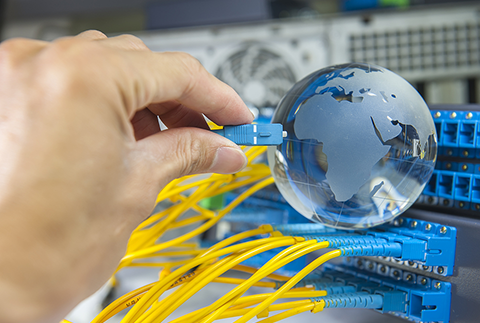The possibility of success in the future for both the WiFi and WiMAX technology are excellent. The sustainability of the WiMAX wireless technology is uncertain. Most businesses and private clients have a wide range of choices in this current wireless technology world but the major battle is between the WiMAX and WiFi technologies.

Before talking about the future of both technologies, it is worth mentioning the major differences between WiMAX and Wi-Fi wireless technologies.
a) The bandwidth of a WiMAX wireless technology goes up to 7Mbps in uplink and 46Mbps in downlink while the WiFi wireless technology has up to 20Mbps shared downlink and uplink.
b) WiMAX has a frequency bandwidth of 20MHz, 10MHz and 5MHz while the WiFi has a frequency bandwidth of 20MHz.
c) WiMAX has a transmission carrier frequency of 3.5GHZ, 2.5GHz and 2.3GHz while WiFi has a transmission carrier frequency of 5GHZ and 2.4GHz.
d) The typical coverage distance for a WiMAX is about 3-10 km for outdoor with a maximum limit of 50km while the WiFi wireless technology has a coverage of 300m for outdoors and 30m for indoors.
e) WiMAX has a middle to high support for uninterrupted service when an individual is travelling from one base station to another while the WiFi technology has a low mobility support.
f) The deployment of WiMAX technology has begun in undeveloped countries as an alternative to DSL and cable as a wide range wireless technology while the WiFi technology is fully deployed as a hotspot for private and business usage.
No doubt that making a choice between the two technologies happens to be so hard. WiMAX technology is acquiring a grip in the upcoming markets for broadband wireless admittance but this is still a tiny section related to size to the bigger global wireless market that consists of mainly the tier 1 operators. Some of the major WiFi antenna manufacturers such as data-alliance.net carry quite a few WiMax antenna options.
Recently, some of the major companies in the world using wireless technologies have decided to pump their capital into the WiMAX technology. This move has brought life to this protocol but the future of the technologhy is not yet guaranteed. Its major advantages over the other wireless technologies are debatable and small. WiMAX offers a near zero or lower intellectual property as opposed to the 5 percent royalty charge of CDMA’s and the fact that WiMAX technology is built on standard IP technology, it extends an infrastructure that has low OPEX and CAPEX.
However, technology maturity status has it balance leaning in the direction of the future generation protocols that base their technology on CDMA and UMTS. A technological transition that may be in favor of WiMAX technology is the overlap between WiFi and WiMAX technology in both wireless devices and infrastructure. WiFi wireless protocol is an option for the unlicensed spectrum while WiMAX wireless protocol is the best option for the licensed spectrum.
The convergence of the two technologies will enable wireless operators to balance the great capacity of an unlicensed spectrum with the free quality of service interface of the licensed spectrum. This converged technology enables wireless network operators to allow for ten times the capacity for a similar cost. This is so because most of the networks have their base on licensed spectrums. This convergence move allows customers who require more bandwidth to enjoy the service at no added charge.